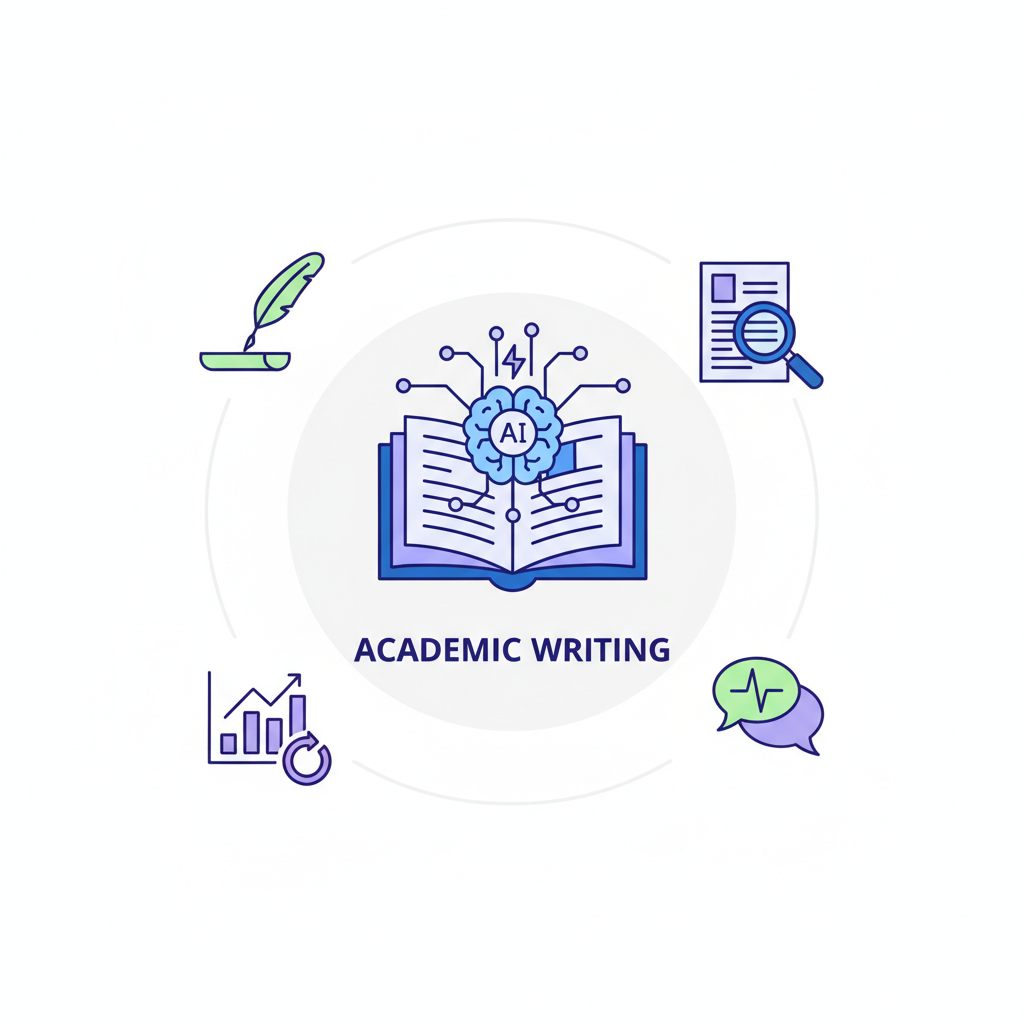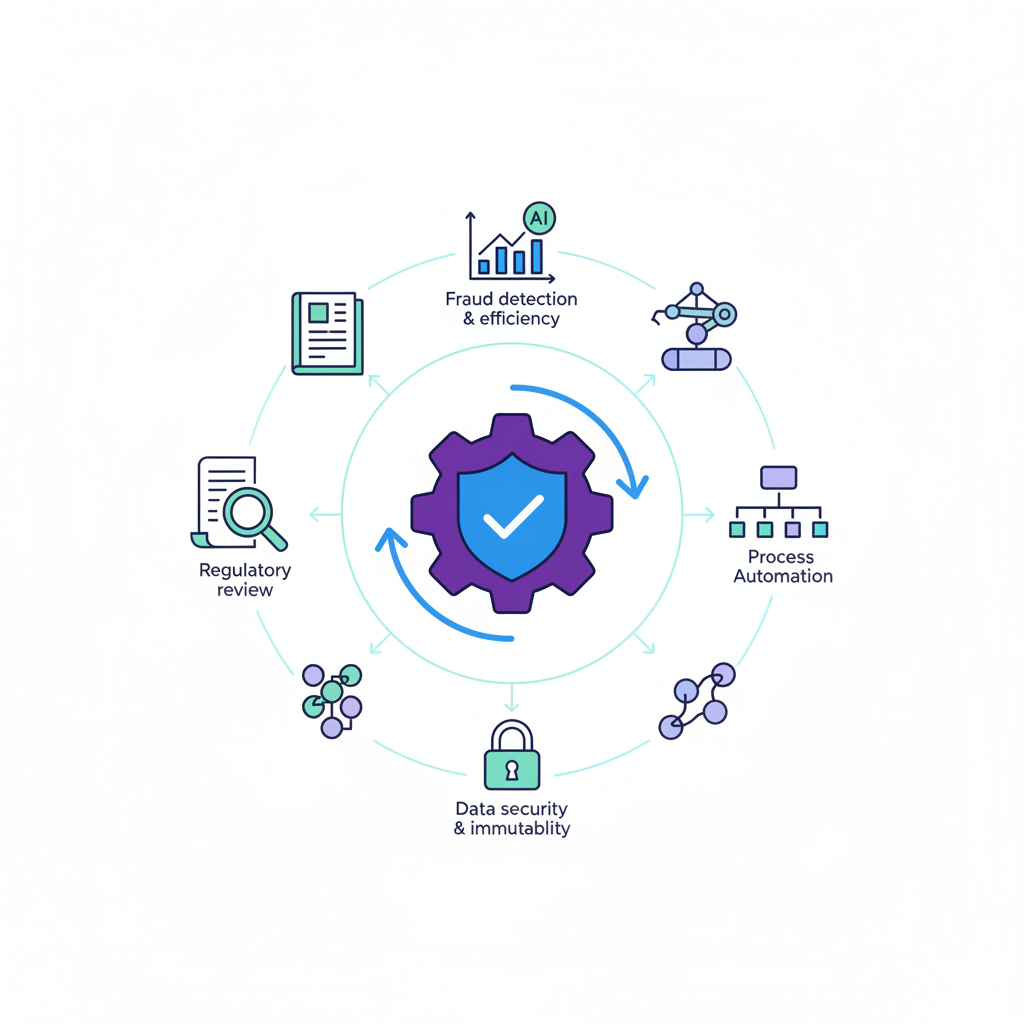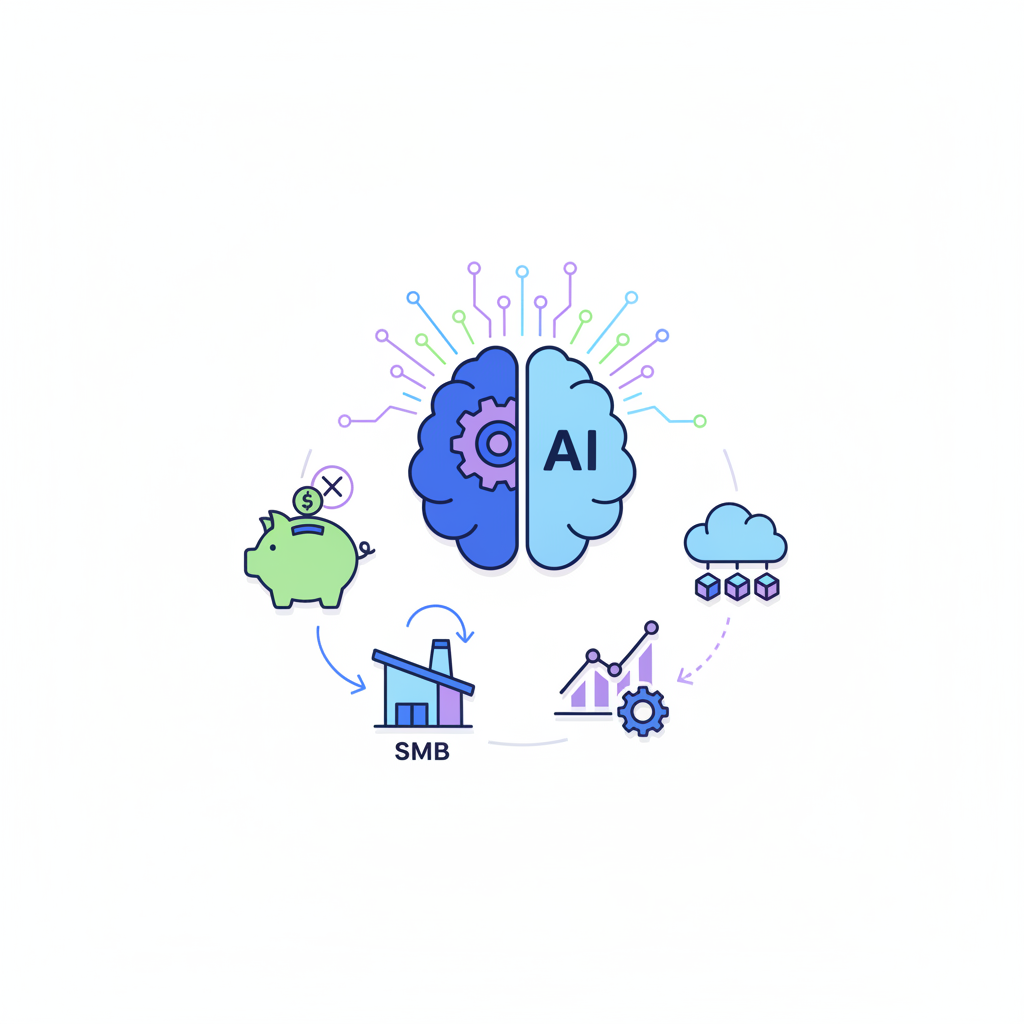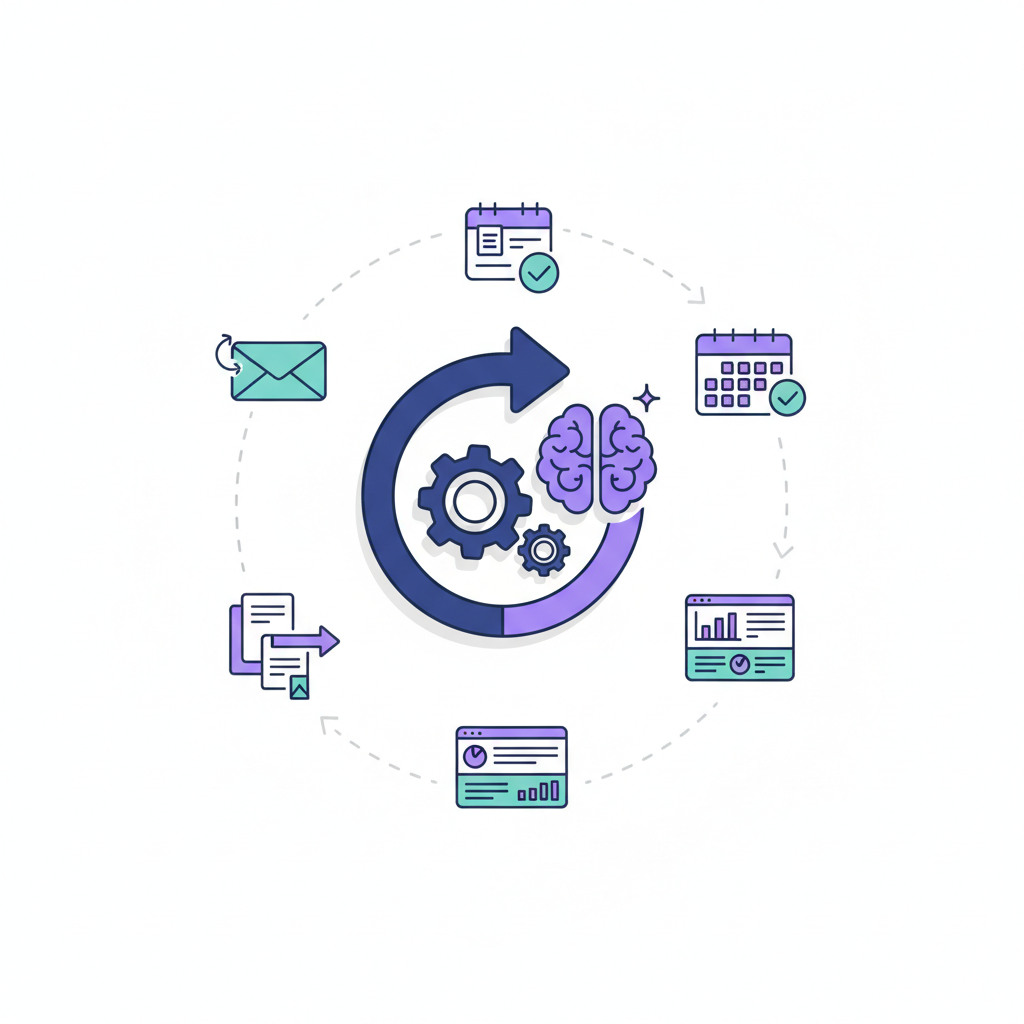Top 10 AI Tools for Academic Writing
Discover the top 10 AI tools for academic writing in 2025: Elicit, Scite.ai, ResearchRabbit, Perplexity AI, QuillBot, Jasper, Zotero, Trinka AI, Tableau, and Tome. Learn how AI refines research, editing, citations, and presentations for students & researchers.

Unlocking Academic Excellence: The Power of AI Tools for Writing and Research
The landscape of academia is more demanding than ever, with students and researchers facing increasing pressure to produce high-quality work under tight deadlines. The complexities of academic writing, from conducting exhaustive literature reviews to ensuring precision in language and adhering to stringent ethical guidelines, often present significant challenges. Time constraints, the sheer volume of information, and the need for impeccable accuracy can overwhelm even the most dedicated scholars. This is where specialized AI tools for academic writing step in, offering a revolutionary approach to streamline workflows and enhance productivity. While general AI models like ChatGPT have garnered significant attention, this article delves deeper, introducing a curated list of the best AI tools for academic writing that go beyond ChatGPT, offering specific functionalities tailored for academic rigor. We will explore their unique applications, discuss crucial ethical considerations, and provide actionable insights on how to integrate these powerful AI writing tools for academics effectively into your research and writing process. Discover how these advanced academic writing tools can transform your approach, making AI for students and AI for researchers an indispensable asset.
The Evolving Landscape of AI in Academia: Opportunities and Challenges
Artificial intelligence is rapidly transforming various sectors, and academia is no exception. Its growing presence in education and research offers unparalleled opportunities to enhance efficiency and accuracy across numerous tasks. For students and researchers, AI in academic writing can be a game-changer, helping overcome common hurdles like writer's block, accelerating the literature review process, and refining the clarity of scholarly communication. These AI research tools promise to free up valuable time, allowing academics to focus more on critical thinking and original contributions. However, this evolution also brings concerns regarding misinformation, potential over-reliance on technology, and complex ethical dilemmas. The responsible adoption of AI-powered tools for students and researchers is paramount. Understanding the capabilities and limitations of specific tools, alongside a commitment to ethical AI tools for academic writing, is crucial for harnessing their benefits while mitigating risks. This section sets the stage for a deeper dive into how to leverage AI intelligently and responsibly.
Understanding Your Needs: Why Specialized AI Tools Outperform General AI for Academics
While general-purpose AI models like ChatGPT have demonstrated impressive capabilities in generating text, their limitations become apparent when applied to the specific demands of academic tasks. These tools often lack the domain specificity required for scholarly work, are prone to "hallucination" (generating plausible but incorrect information), and struggle with accurate, verifiable citation. This leads to the pertinent question: "What is better than ChatGPT for academic writing?" The answer lies in specialized AI tools for academic research and writing that are purpose-built for specific academic functions. These tools are often trained on vast datasets of scholarly articles, theses, and research papers, enabling them to understand and adhere to academic style, tone, and rigor. We can categorize these AI tools for improving academic writing into distinct areas: research and literature review, writing and editing, data analysis, and referencing. The value proposition of these specialized academic research tools is their enhanced accuracy, adherence to academic conventions, and features that directly address the unique needs of scholars, often requiring sophisticated AI prompting for optimal results.
Top AI Tools for Academic Research & Literature Review
Navigating the vast ocean of academic literature is a cornerstone of research. The following tools are designed to streamline this process, from initial discovery to the synthesis of complex information, making your literature review more efficient and insightful.
1. Elicit / Semantic Scholar AI: Intelligent Literature Discovery
Elicit and Semantic Scholar AI are powerful AI tools for literature reviews that revolutionize how researchers find and interact with scholarly papers. They excel at intelligent literature discovery by allowing users to pose research questions directly.
Best Use Cases: Finding relevant papers based on specific queries, summarizing abstracts to quickly grasp key findings, identifying core concepts within a body of literature, and even answering specific research questions by extracting information from multiple sources.
Pros: Both focus exclusively on academic papers, provide structured results, and can extract citations effectively. Elicit, in particular, can help identify methodologies and outcomes.
Cons: They can sometimes miss the subtle nuances of complex arguments, and effective use often requires careful prompt engineering to yield the most precise results.
Actionable Tip: Formulate your prompts as specific research questions rather than broad keywords. Always compare the results with traditional search engines to ensure comprehensive coverage. These are essential AI research tools for any serious scholar.
2. Scite.ai / Connected Papers: Citation Analysis & Context
Scite.ai and Connected Papers offer unique perspectives on the interconnectedness of academic research, functioning as advanced AI tools for citation tracking and analysis.
Best Use Cases: Understanding the context in which a paper has been cited (whether it's supporting, contrasting, or mentioning), identifying highly influential papers in a field, and visually exploring research networks to uncover related works and intellectual lineages.
Pros: Scite.ai's "Smart Citations" provide invaluable context, while Connected Papers offers a visual, graph-based mapping of research, making it easier to see how papers relate. Both help identify highly cited works and emerging trends.
Cons: Full access to their advanced features is often subscription-based, and the network visualization in Connected Papers can have a learning curve for new users.
Actionable Tip: Use Scite.ai to quickly assess the impact and reception of a foundational paper. For Connected Papers, start with a seminal article in your field to generate a rich, visual exploration of its academic descendants and ancestors. These are excellent academic research tools.
3. ResearchRabbit: Visualizing Research Landscapes
ResearchRabbit is a dynamic and intuitive tool designed to help researchers discover and visualize connections within academic literature, making it a standout among AI tools for academic research and writing.
Best Use Cases: Discovering similar papers to ones you already know, tracking the publications of specific authors, building and organizing a personal research collection, and visualizing the intricate connections between different studies and researchers. It's particularly useful for identifying emerging trends and influential works.
Pros: Its intuitive, user-friendly interface makes discovery engaging. It offers dynamic recommendations based on your existing library, helping you uncover relevant literature you might otherwise miss. The visual mapping of research landscapes is a significant advantage.
Cons: While excellent for discovery, it can become overwhelming if you input a very large dataset of papers. Its primary strength lies in exploration rather than deep content analysis.
Actionable Tip: Begin by seeding ResearchRabbit with a few core papers that are central to your topic. This will allow the AI to build a robust and highly relevant recommendation network, significantly enhancing your literature review process. It's a fantastic AI for researchers and a powerful study assistance AI.
4. Perplexity AI (Academic Mode): Conversational Research Assistant
Perplexity AI, especially in its dedicated "Academic Mode," functions as a sophisticated conversational research assistant, providing direct answers with verifiable sources. It's a prime example of an effective AI research tool.
Best Use Cases: Obtaining quick summaries of complex topics, finding authoritative sources to support specific claims or arguments, and exploring various sub-topics within a broader field, all while receiving direct citations for the information provided.
Pros: A key advantage is its ability to provide sources directly alongside its answers, which is crucial for academic integrity. The conversational interface makes it highly accessible, and the "Academic Mode" specifically filters for scholarly content, enhancing relevance and reliability.
Cons: While useful for initial exploration, the summaries it provides can sometimes be superficial, lacking the depth required for comprehensive academic analysis. Users must still critically evaluate the provided sources for accuracy and context.
Actionable Tip: Use Perplexity AI to get a rapid overview of a new topic or to gather initial sources before embarking on a deep dive into the literature. Always cross-reference the information and read the original papers for full understanding. It's a valuable summarizing AI and a helpful AI for students.
Top AI Tools for Academic Writing, Editing & Referencing
Once the research is gathered, the next critical phase is transforming insights into coherent, well-structured, and impeccably referenced academic text. These tools are designed to refine your language, ensure structural integrity, and manage citations with precision.
5. QuillBot / Grammarly Premium: Paraphrasing & Grammar Refinement
QuillBot and Grammarly Premium are indispensable AI tools for improving academic writing, offering robust features for language enhancement and plagiarism prevention.
Best Use Cases: QuillBot excels at paraphrasing sources to help avoid unintentional plagiarism, while both tools are invaluable for improving sentence structure, correcting grammar and spelling errors, and adjusting the tone of your writing to suit academic conventions.
Pros: QuillBot offers multiple paraphrasing modes, allowing for varied outputs, and integrates well with word processors. Grammarly Premium provides comprehensive grammar and style checks, a plagiarism checker, and suggestions for conciseness and clarity.
Cons: While highly useful, QuillBot can occasionally alter the original meaning of a sentence, requiring careful review. Over-reliance on either tool can sometimes stifle a writer's original voice and critical thinking.
Actionable Tip: Use these tools as intelligent suggestion engines. Always review and edit their outputs to ensure accuracy, maintain your unique academic voice, and uphold academic integrity. They are powerful proofreading AI and wordsmithing AI assistants.
6. Jasper / Copy.ai (for Brainstorming & Outlining): Idea Generation & Structure
Jasper and Copy.ai are powerful generative AI platforms that, when used strategically, can be excellent AI writing tools for academics for the initial stages of writing.
Best Use Cases: These tools are particularly effective for overcoming writer's block, generating a wide array of topic ideas, structuring complex arguments, and creating detailed outlines for papers, essays, or research proposals.
Pros: They offer diverse templates tailored for various content types, can generate content based on highly specific prompts, and are excellent for organizing scattered thoughts into a coherent structure.
Cons: The output, while often impressive, requires significant human editing and critical evaluation to meet the rigorous standards of academic writing. They are not designed to produce fully research-backed academic content.
Actionable Tip: Employ specific academic prompts. For example, instead of "write about climate change," try "Outline a literature review on the socio-economic impacts of climate change in developing nations, including sections on adaptation strategies and policy implications." This precise AI prompting makes them valuable learning assistance AI.
7. Zotero / Mendeley (with AI features): Smart Reference Management
Zotero and Mendeley are industry-standard reference management tools that increasingly integrate AI tools for citation tracking and management, making them essential academic writing tools.
Best Use Cases: Efficiently organizing vast libraries of citations, automatically generating bibliographies and in-text citations in various styles, and seamlessly integrating with word processors for smooth writing. Newer AI features offer suggestions for related papers or even content summarization and tagging.
Pros: They automate the tedious process of citation formatting, reducing errors and saving significant time. Both offer collaborative features for group projects, and their browser extensions allow for easy capture of research materials. The emerging AI capabilities further enhance discovery and organization.
Cons: There can be a learning curve to master their advanced features, especially for new users. The extent and sophistication of AI capabilities vary between the tools and their different versions.
Actionable Tip: Make it a habit to regularly sync your reference library across devices. Utilize their browser extensions to capture citation information as you discover papers, ensuring your bibliography is always up-to-date and accurate.
8. Trinka AI / Paperpal: Academic-Specific Language & Style Editor
Trinka AI and Paperpal are specialized AI tools for improving academic writing, specifically crafted to address the unique linguistic and stylistic demands of scholarly publications.
Best Use Cases: These tools are excellent for enhancing academic tone, correcting complex scientific grammar, ensuring conciseness in expression, and checking for common academic errors that general grammar checkers might miss. They are particularly useful for non-native English speakers.
Pros: Unlike general grammar checkers, Trinka AI and Paperpal are trained on vast datasets of academic texts, allowing them to understand discipline-specific nuances and provide contextual suggestions that align with scholarly conventions. They offer features like word count reduction and technical phrase improvement.
Cons: While highly specialized, they can sometimes be overly prescriptive, potentially leading to a loss of individual authorial voice if suggestions are accepted without critical review. They may also not catch all highly specific stylistic preferences of certain journals.
Actionable Tip: Use these tools as a final academic polish after you've completed a general grammar and spell check. Focus on their suggestions for academic tone, conciseness, and discipline-specific terminology to elevate the quality of your manuscript. They are excellent proofreading AI and wordsmithing AI solutions, truly academia-approved AI.
Top AI Tools for Data Analysis & Specialized Tasks
Beyond writing and research, AI is also making significant inroads into data interpretation and presentation. These tools assist with making sense of complex datasets and transforming them into compelling visual narratives.
9. Tableau / Power BI (with AI Insights): Data Interpretation & Visualization
Tableau and Power BI are leading business intelligence tools that increasingly integrate AI tools for data analysis in research, offering powerful capabilities for interpreting and visualizing quantitative data.
Best Use Cases: Identifying subtle trends and patterns within large datasets, generating natural language explanations of complex data points, and creating interactive dashboards and visualizations that effectively communicate research findings.
Pros: They offer powerful visualization capabilities, automated insights that can highlight anomalies or key findings, and the ability to handle and process very large datasets efficiently. Their interactive nature allows for deeper exploration.
Cons: Both tools have a steep learning curve, especially for users new to data visualization and analysis. They are primarily designed for quantitative data, and their advanced AI features can be limited or require subscriptions in free versions.
Actionable Tip: Leverage the AI-driven insights features (e.g., Tableau's "Explain Data" or Power BI's "Quick Insights") to rapidly identify anomalies, correlations, or key findings in your research data before diving into manual analysis. This is a powerful AI for researchers.
10. Tome / Gamma: AI-Powered Presentation Generation
Tome and Gamma represent a new generation of AI tools for academic success by automating the creation of presentations, transforming text into visually appealing slide decks.
Best Use Cases: Quickly generating professional-looking slide decks from existing text (e.g., a research paper summary or an outline), structuring presentations logically, and suggesting visual layouts and imagery that complement your content.
Pros: These tools significantly save time on design and formatting, allowing researchers to focus on content. They help organize complex information into a logical flow and often produce aesthetically pleasing, professional-looking presentations.
Cons: The output typically requires significant customization to achieve the academic depth and specific visual requirements often needed for scholarly presentations. They may also lack specific citation features found in academic-focused tools.
Actionable Tip: To get the best results, provide a well-structured outline or a concise summary of your research to the AI. This ensures the generated presentation accurately reflects your key messages and arguments. They serve as valuable learning assistance AI for presentation preparation.
Integrating AI into Your Academic Workflow: A Step-by-Step Guide
Successfully leveraging AI in academia isn't about using one tool, but about strategically integrating multiple AI tools for academic success into a cohesive workflow. This approach maximizes efficiency and enhances the quality of your work, creating a seamless academic journey.
- Pre-Research Phase: Brainstorming & Initial Literature Search
- Research Phase: Deep Literature Review & Citation Tracking
- Outlining & Drafting: Structuring Arguments & Generating Initial Content
- Writing & Editing: Paraphrasing, Grammar & Academic Tone
- Data Analysis & Visualization: Interpreting Results & Creating Visuals
- Referencing & Final Review: Ensuring Accuracy & Checking for Plagiarism
Begin by using tools like Jasper or Copy.ai for brainstorming topics, refining research questions, and generating initial outlines. Then, transition to Elicit or Perplexity AI (Academic Mode) for an initial literature search, quickly identifying foundational papers and understanding the current research landscape. This helps define the scope and direction of your study. This phase heavily relies on effective AI prompting.
Once initial papers are identified, dive deeper with Scite.ai or ResearchRabbit to analyze citation contexts, visualize research networks, and discover related works. Simultaneously, use Zotero or Mendeley to meticulously track and organize all your citations, ensuring every source is properly recorded for future referencing. These AI-powered tools for students and researchers are critical for robust research.
Return to Jasper or Copy.ai to develop detailed outlines and generate initial drafts of sections, particularly for introductory paragraphs, methodology descriptions, or discussion points. Remember, these are starting points, not final products. The goal is to overcome writer's block and establish a clear structure.
As you write, integrate QuillBot for paraphrasing sources to avoid plagiarism and rephrasing sentences for clarity. Follow up with Grammarly Premium for comprehensive grammar, spelling, and style checks. For a final academic polish, use Trinka AI or Paperpal to refine your language, ensure an appropriate academic tone, and correct discipline-specific errors. These are essential AI tools for academic writing workflow.
If your research involves quantitative data, utilize Tableau or Power BI with their AI insights features to interpret results, identify trends, and create compelling data visualizations. These tools can help you articulate your findings clearly and effectively.
Before submission, use Zotero or Mendeley to automatically generate your bibliography and ensure all in-text citations are correctly formatted. Run a final plagiarism check using Grammarly's built-in checker or a dedicated tool. Most importantly, conduct a thorough manual review of your entire paper to ensure coherence, accuracy, and that your unique voice and critical thinking shine through.
By strategically combining these tools, you can create a highly efficient and effective AI tools for academic success workflow that supports every stage of your academic journey.
Navigating the Ethical Landscape: AI Detection, Bias, and Responsible Use
The integration of AI into academic writing, while offering immense benefits, also introduces a complex ethical landscape that demands careful navigation. The critical importance of ethics in using AI for academic work cannot be overstated.
Understanding AI Detection Tools and Their Implications
The rise of generative AI has led to the development of AI detection tools like Turnitin, GPTZero, and Originality.ai, designed to identify AI-generated text. These tools typically work by analyzing linguistic patterns, perplexity, burstiness, and other statistical markers that differ between human-written and AI-generated content. However, it's crucial to understand their limitations and inaccuracies. Many AI detectors are prone to false positives, incorrectly flagging human-written text as AI-generated, especially for non-native English speakers or those with formulaic writing styles. The evolving nature of AI models also means detectors are constantly playing catch-up, often becoming outdated quickly. This creates significant impact on academic integrity and can cause undue anxiety for students. The question "Which AI detector is best for academic writing?" often misses the point; the focus should be on understanding how they work and ensuring your work is genuinely original, rather than trying to "beat" the system. Acknowledging the limitations of AI reliability is key.
Best Practices for Ethical AI Use and Disclosure
Responsible engagement with AI tools is paramount for maintaining academic integrity.
- Transparency: Always disclose any AI assistance used in your academic work. This could be in a methodology section, an acknowledgment, or a specific footnote, depending on institutional guidelines.
- Fact-Checking: AI outputs are not inherently accurate. They can "hallucinate" or present biased information. Human verification of all facts, figures, and sources generated or summarized by AI is absolutely paramount.
- Originality: View AI as an assistant, not a replacement for your critical thinking, analysis, and original contribution. Your unique voice and intellectual effort must remain at the core of your work.
- Avoiding Over-Reliance: While AI can boost efficiency, excessive dependence can hinder the development of your own analytical skills, writing prowess, and research capabilities. Maintain your unique voice and critical thinking.
- Addressing AI Bias and Privacy Concerns: Be aware that AI models are trained on vast datasets that may contain inherent biases, which can be reflected in their outputs. Critically evaluate the information for fairness and representation. Also, consider data security and privacy when inputting sensitive research data into third-party AI tools.
- University Guidelines: Always adhere to your institution's specific policies and guidelines regarding the use of AI in academic work. These policies are evolving, so stay informed.
By following these practices, you ensure your use of ethical AI tools for academic writing is responsible and aligns with academia-approved AI standards, mitigating concerns about AI bias and AI privacy.
Conclusion & Future Outlook: Embracing AI for a Smarter Academic Journey
The journey through academia is rigorous, but the advent of specialized AI tools for academic writing offers a transformative pathway to greater efficiency and enhanced quality. We've explored a diverse range of tools, from intelligent literature discovery platforms like Elicit and ResearchRabbit to sophisticated language refiners like Trinka AI and comprehensive reference managers such as Zotero. These best AI tools for academic writing move beyond ChatGPT, providing targeted functionalities that address the specific needs of scholars. By integrating these AI writing tools for academics responsibly and ethically, students and researchers can significantly streamline their workflows, overcome common challenges, and elevate the standard of their scholarly output.
The future of AI in academic writing promises even more sophisticated capabilities. We can anticipate more personalized research assistants that deeply understand individual research interests, advanced data synthesis tools that can draw complex conclusions from disparate datasets, and real-time collaborative AI tools that facilitate seamless teamwork. The key to harnessing this potential lies in a commitment to responsible and ethical AI integration. We encourage all readers to explore these powerful tools, experiment with their features, and stay informed about the evolving landscape of AI ethics and institutional guidelines. Embrace AI not as a shortcut, but as a powerful partner in forging a smarter, more productive academic journey.
Frequently Asked Questions About AI Tools in Academic Writing
Q: Can AI tools write my entire paper for me?
A: No. While AI tools can generate text, outlines, and summaries, they cannot conduct original research, provide critical analysis, or ensure academic rigor. They are assistants, not replacements for human intellect and effort. Relying solely on AI for an entire paper is unethical and will likely result in a low-quality, detectable submission.
Q: Are AI-generated citations reliable?
A: AI tools can help manage and format citations, but their ability to generate accurate, verifiable citations from scratch is limited and prone to errors or "hallucinations." Always cross-reference any AI-generated citation with the original source and use dedicated reference management tools like Zotero or Mendeley for reliability.
Q: How can I avoid plagiarism when using AI tools?
A: To avoid plagiarism, use AI tools for brainstorming, outlining, or paraphrasing *your own ideas* or *sources you have already read and understood*. Never copy AI-generated text directly without proper attribution or significant human revision. Always fact-check AI outputs, cite all sources, and use a plagiarism checker before submission. Transparency about AI use is also crucial for ethical AI tools for academic writing.
Q: Will using AI tools make me a 'lazy' academic?
A: Not if used responsibly. AI tools are designed to automate tedious tasks, freeing up time for deeper critical thinking, analysis, and creative problem-solving. They can enhance productivity and learning, but they should never replace the fundamental skills of research, writing, and critical evaluation. The goal is to be a smarter, more efficient academic, not a lazy one.
Q: What's the most important thing to remember when using AI for academic writing?
A: The most important thing is to maintain academic integrity and critical oversight. Always verify information, disclose AI assistance, ensure your work reflects your original thought, and adhere to your institution's guidelines. Be aware of AI detection tools and focus on genuine originality.
Featured Tools

10Web is an AI-powered WordPress platform that offers automated website building, hosting, and optimization with AI assistance for content and image generation.

A global creative platform connecting businesses with freelance designers for custom graphic design projects.

A1.art is an AI art generator that transforms text descriptions into unique digital artworks across various styles.

Acquire.io is a customer engagement platform offering live chat, AI chatbots, co-browsing, and video chat to enhance customer support and sales.

A customer experience automation platform combining email marketing, marketing automation, and CRM with AI-powered personalization.
Top AI Categories
Related Articles

AI for financial services: compliance & automation
Discover how AI is revolutionizing financial services through advanced compliance automation, real-time fraud detection, regulatory reporting, and hyper-personalized customer experiences. Explore the future of intelligent, efficient, and secure banking.

How SMBs can adopt AI without big spending
Discover how small and medium businesses can adopt AI affordably. This practical guide covers low-cost tools, quick wins, real-world examples, and step-by-step strategies to integrate AI without breaking the bank.

Top 10 AI tools for Enterprise Workflow Automation
Enterprises are turning to AI-powered workflow automation to eliminate manual processes, cut costs, and accelerate strategic execution. Unlike traditional automation, AI can handle unstructured data and make intelligent decisions, offering profound benefits across finance, HR, and IT. This guide curates the top 10 AI tools—from RPA leaders like UiPath and Automation Anywhere to iPaaS solutions like Workato and low-code platforms like Microsoft Power Automate—providing a blueprint for building a more agile and resilient organization.